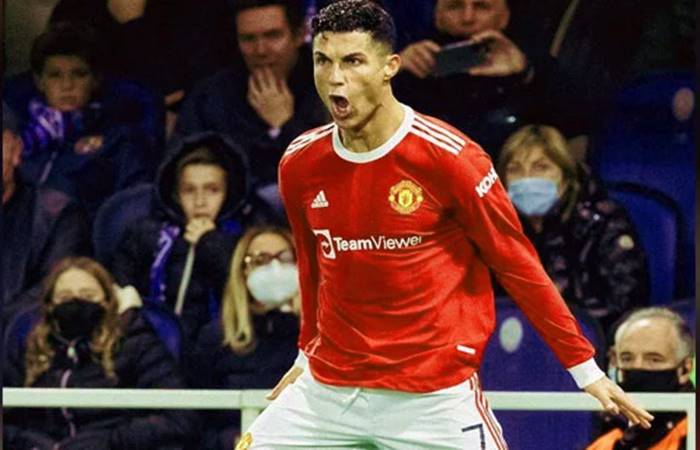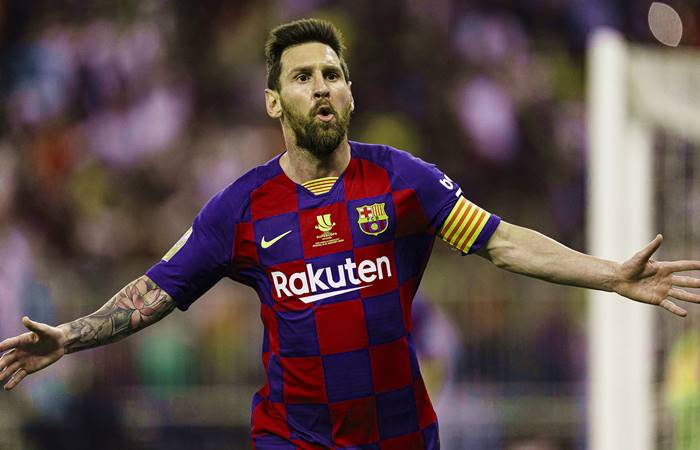
The Art and Science of Free-Kick Mastery in Football.
Few moments in football capture the imagination quite like a perfectly executed free kick. That tense pause as the referee marks the spot, the wall of defenders nervously shuffling into position, the goalkeeper adjusting his stance with eyes locked on the ball – all culminating in that split-second explosion of movement as the taker begins his run-up. The ball either rockets into the top corner with unstoppable force, dips viciously at the last moment to deceive the keeper, or curls deliciously around the wall into the side netting. These moments of individual brilliance can change games, define careers, and etch themselves permanently into football folklore.
Mastering the free kick is one of football’s most difficult arts, requiring an almost alchemical combination of technical precision, physical power, and psychological composure. The best specialists spend countless hours perfecting their craft – experimenting with different approaches, studying goalkeeper tendencies, and developing signature techniques that become their trademark. Some, like Juninho Pernambucano, became scientists of the knuckleball effect. Others, like David Beckham, were artists of the curling banana kick. A rare few, like Lionel Messi, combine both power and placement to devastating effect.
The history of free-kick taking has evolved dramatically over the decades. In football’s early years, direct free kicks were relatively rare, with most set pieces being crossed into the box rather than shot at goal. The 1970s saw pioneers like Brazil’s Zico begin to perfect the dipping shot, while the 1990s introduced the era of the specialist free-kick taker – players like Mihajlovic, Beckham and Recoba who were often kept in teams primarily for their dead-ball prowess. Today, while the number of direct free-kick goals has declined due to improved defensive organization and goalkeeper athleticism, the very best practitioners continue to produce moments of magic that remind us why this skill remains so cherished.
ALSO READ: Top 10 Greatest Goalkeepers in Football History
Brazilian legend Juninho Pernambucano stands atop the pantheon of free-kick greats with an astonishing 77 direct free-kick goals – a record that may never be broken. His unique knuckleball technique, which made the ball dip and swerve unpredictably, left goalkeepers helpless and inspired a generation of imitators. Close behind are modern icons like Lionel Messi (69 goals and counting) and Cristiano Ronaldo (64), who have adapted their styles over the years to remain potent threats. Perhaps most remarkably, the list includes Brazilian goalkeeper Rogério Ceni (61), who proved that set-piece brilliance isn’t exclusive to outfield players by scoring more free kicks than many legendary strikers managed in their careers.
In this definitive ranking, we count down the 10 greatest free-kick specialists in football history based on verifiable statistics and iconic achievements. Our analysis goes beyond just the numbers to examine:
-
The unique techniques that made each player special
-
Their most memorable free-kick goals in crucial matches
-
How they practiced and perfected their craft
-
Why their particular style was so effective in their era
-
The legacy they left on the art of free-kick taking
We’ll also explore why Brazilian players dominate the all-time rankings (claiming 5 of the top 10 spots), how the approach to free kicks has changed tactically over time, and whether modern football’s emphasis on short-passing set pieces means we’re seeing the decline of the spectacular long-range free-kick goal.
Key Takeaways From Football’s Free-Kick Elite
-
Juninho Pernambucano’s 77 free-kick goals may stand forever as the pinnacle of set-piece mastery. His knuckleball technique was so effective that physicists studied it, and his clutch performances for Lyon in the 2000s set a new standard.
-
Brazil’s free-kick dominance is undeniable – with Pelé (70), Ronaldinho (66), Zico (62), Juninho (77) and even goalkeeper Rogério Ceni (61) in the top 10. Their technical upbringing and creative flair seem perfectly suited to dead-ball excellence.
-
Modern masters Messi (69) and Ronaldo (64) continue adding to their tallies, though at slower rates than in their primes. Messi’s left-footed curlers and Ronaldo’s powerful knuckleballs represent two contrasting but equally effective approaches.
-
Rogério Ceni’s inclusion as the only goalkeeper highlights how exceptional his set-piece ability was. The São Paulo legend scored 131 career goals (61 from free kicks), redefining what’s possible for shot-stoppers.
-
The declining frequency of direct free-kick goals in modern football reflects tactical changes (more short passes), better defensive walls, and improved goalkeeper athleticism. The art isn’t dying, but it’s becoming rarer and more precious.
As we proceed through each legendary player in our top 10 countdown, we’ll analyze what made them special, showcase their most iconic goals, and explain why their particular skills allowed them to excel at this most challenging of football arts. From the physics-defying strikes of Juninho to Beckham’s precision curls, from Maradona’s explosive power to Messi’s impossible angles – this is the ultimate celebration of football’s free-kick royalty.
Full Ranking: Top 10 Free-Kick Scorers in History
10. Rogério Ceni (Brazil) – 61 Goals
The most extraordinary entry on this list is undoubtedly Rogério Ceni, the only goalkeeper among outfield legends. During his 25-year career at São Paulo (1990-2015), Ceni redefined what was possible for a shot-stopper, becoming the highest-scoring goalkeeper in history with 131 total goals. His 61 free-kick goals came from a combination of powerful strikes and precise placement, often taken from 25-35 yards out.
Ceni’s set-piece ability was so respected that he remained São Paulo’s primary free-kick taker even when world-class attackers were on the pitch. His most famous free-kick came in the 2005 Club World Cup against Liverpool, where his dipping strike from 30 yards nearly beat Pepe Reina. What makes Ceni’s record more impressive is that he achieved these numbers while maintaining his primary duties as one of Brazil’s top goalkeepers, winning two Copa Libertadores and three Brazilian league titles.
9. Zico (Brazil) – 62 Goals
Arthur Antunes Coimbra, known as Zico, was Brazil’s free-kick maestro during the 1970s and 80s. His 62 free-kick goals came primarily during his time at Flamengo (1971-1983, 1985-1989) and brief stint at Udinese (1983-1985). Zico’s technique was revolutionary – he could generate incredible dip and swerve while maintaining pinpoint accuracy. His free-kick against Scotland in the 1982 World Cup, where he curled the ball over the wall and down into the net, remains one of the tournament’s most iconic goals.
Zico practiced free-kicks religiously, often staying after training to hit hundreds of balls, which resulted in his ability to place shots exactly where he wanted. His free-kick prowess was a major factor in Flamengo’s dominance during the early 80s, including their 1981 Copa Libertadores and Intercontinental Cup victories.
8. Diego Maradona (Argentina) – 62 Goals
Diego Armando Maradona’s free-kick ability often gets overshadowed by his dribbling genius, but his 62 free-kick goals prove he was equally deadly from set pieces. During his peak at Barcelona (1982-1984) and Napoli (1984-1991), Maradona’s left foot could produce rockets that either found the top corner or dipped viciously at the last moment.
His most famous free-kick came against Juventus in 1986, a 30-yard screamer that left Stefano Tacconi rooted to the spot. Maradona’s technique was unorthodox – he often approached the ball at an angle and struck it with his laces, generating unpredictable movement. In international football, his free-kick against Greece in 1994 World Cup qualifying showcased his enduring quality, even as his physical condition declined.
7. Cristiano Ronaldo (Portugal) – 64 Goals

Cristiano Ronaldo’s free-kick evolution mirrors his overall career trajectory. Early at Manchester United (2003-2009), he favored a curling technique, but after moving to Real Madrid (2009-2018), he developed his trademark knuckleball – struck with minimal spin to create erratic movement. Between 2009-2014, Ronaldo was virtually unstoppable from free-kicks, scoring 12+ per season at his peak. His most memorable came against Portsmouth in 2008 (a dipping rocket) and against Spain in the 2018 World Cup (a last-minute equalizer).
However, since 2015, his conversion rate has significantly dropped due to changes in ball design and goalkeeping techniques. Despite this, his 64 goals place him among the all-time greats, and his willingness to take responsibility in crucial moments remains unmatched.
6. David Beckham (England) – 65 Goals
David Beckham’s free-kick legacy is defined by his perfect blend of technique and consistency. His 65 goals came primarily from a 20-yard “Beckham Zone” to the right of center, where he could curl shots into the far post with unerring accuracy. The physics behind Beckham’s technique have been studied extensively – he struck the ball with the inside of his right foot while leaning back slightly, generating both curve and dip. His most famous free-kick came against Greece in 2001 World Cup qualifying, a last-minute equalizer that sent England to the World Cup.
At Real Madrid, he adapted his technique to score from longer distances, including a 35-yard rocket against Real Betis in 2006. Beckham’s preparation was legendary – he would practice for hours after training, placing cones in the corners of the goal to perfect his placement.
5. Víctor Legrotaglie (Argentina) – 66 Goals
The least known name on this list, Víctor Legrotaglie was a free-kick specialist ahead of his time. Playing primarily for Gimnasia y Esgrima La Plata (1955-1969) in Argentina’s domestic league, Legrotaglie developed a reputation for unstoppable free-kicks during an era when set-piece specialization was rare. His technique involved striking the ball low and hard with minimal backlift, often placing it just inside the post where goalkeepers couldn’t reach.
While footage is scarce, contemporary accounts describe his free-kicks as “mathematically precise.” In an era before specialized training, Legrotaglie’s natural ability to judge trajectory and power made him one of South America’s most feared set-piece takers during the 1960s.
4. Ronaldinho (Brazil) – 66 Goals
Ronaldinho’s free-kicks were as entertaining as his dribbling – unpredictable, creative, and often cheeky. His 66 goals included everything from powerful drives to delicate chips over the wall. At Barcelona (2003-2008), he became known for his no-look free-kick routine, where he would glance one way before striking the ball in the opposite direction.
His most famous free-kick came against Werder Bremen in the 2006 Champions League – a dipping shot that swerved late to beat the goalkeeper at his near post. Ronaldinho’s technique was unique – he often struck the ball with his toes rather than instep, generating unusual movement that confused goalkeepers. Even in his later career at Flamengo and Atlético Mineiro, his free-kick ability remained a potent weapon.
3. Lionel Messi (Argentina) – 69 Goals

Lionel Messi’s free-kick mastery represents a late-career evolution that has seen him become the most consistent taker of the modern era. After struggling with set-pieces early in his career, Messi refined his technique around 2015, developing a left-footed curl that combines precision placement with just enough power to beat the goalkeeper. His 69 goals include crucial strikes against Liverpool (2019 UCL), USA (2016 Copa America), and numerous La Liga opponents.
Messi’s technique involves a short run-up and clean contact with his instep, generating consistent rotation that makes the ball dip at the last moment. Since 2015, he has averaged 5+ free-kick goals per season – a remarkable conversion rate in an era of improved goalkeeping and defensive organization. At Inter Miami, he continues to add to his tally, proving his free-kick prowess endures even in the latter stages of his career.
2. Pelé (Brazil) – 70 Goals
Pelé’s 70 free-kick goals were achieved during an era when the rules and ball design made set-piece scoring more difficult. Playing primarily for Santos (1956-1974), Pelé combined power with placement, often driving the ball through or over the wall with unerring accuracy. His free-kick technique was revolutionary for the 1960s – he would strike the ball with his laces while leaning back slightly, generating both power and dip.
In international football, his free-kick against Wales in the 1958 World Cup (aged just 17) announced his arrival on the global stage. Pelé’s dead-ball ability was particularly impressive given the heavier balls and less organized defensive walls of his era. Many of his free-kick goals came in crucial matches, including several in Intercontinental Cup and Copa Libertadores fixtures that cemented Santos as one of history’s greatest club sides.
1. Juninho Pernambucano (Brazil) – 77 Goals
The undisputed free-kick king, Juninho Pernambucano’s 77 goals represent a combination of technical innovation and clutch performance. During his Lyon heyday (2001-2009), Juninho perfected the knuckleball technique – striking the ball with minimal spin to create unpredictable movement in the air. His record includes 44 free-kick goals for Lyon alone, many in crucial Champions League and Ligue 1 matches. Juninho could score from any distance – close-range chips over the wall (vs. Barcelona 2007), 30-yard rockets (vs. Werder Bremen 2005), or even 40-yard thunderbolts (vs. PSG 2006).
Scientists have studied his technique, noting how he struck the ball slightly off-center with his instep while keeping his ankle locked. Perhaps most impressively, Juninho maintained a 10% conversion rate from free-kicks – nearly double the average for most specialists. Even after leaving Lyon, he continued scoring for Vasco da Gama and the Brazilian national team, cementing his status as the greatest free-kick taker the game has ever seen.
Why Are Free-Kick Goals Declining in Modern Football?
The art of free-kick scoring has become increasingly rare in modern football due to several key factors:
-
Improved Defensive Organization – Modern teams employ sophisticated wall strategies, including specialized jumping techniques and goalkeeper positioning that cover more of the goal. The introduction of additional assistant referees has also reduced defensive wall encroachment, giving keepers better visibility.
-
Goalkeeping Advancements – Today’s keepers are taller, more athletic, and study opponents’ free-kick tendencies extensively through video analysis. The use of specialized goalkeeper gloves with better grip has also improved save percentages.
-
Ball Design Changes – Modern match balls are designed for consistent flight, making the unpredictable knuckleball and swerve effects more difficult to achieve compared to earlier heavy leather balls.
-
Tactical Evolution – Many managers now prefer short free-kick routines to maintain possession rather than risking low-percentage long-range attempts. The increased emphasis on xG (expected goals) analysis discourages speculative shots.
-
Specialization Decline – Fewer players dedicate training time exclusively to free-kicks, focusing instead on all-around attacking play. The demands of the modern game leave less time for the repetitive practice required to master set pieces.
Despite these challenges, Lionel Messi’s continued success proves free-kicks remain a valuable weapon, though it’s unlikely we’ll see another specialist reach Juninho’s remarkable 77-goal tally in the current football landscape.
Conclusion
Juninho Pernambucano’s 77 free-kick goals represent a record that may never be broken. His combination of technical innovation, consistency, and clutch performances in big matches sets him apart even from other all-time greats like Pelé and Messi. While modern football has made free-kick scoring more difficult, the enduring appeal of these spectacular goals ensures new generations will continue attempting to emulate Juninho’s mastery. His legacy serves as a reminder that dedicated practice and technical creativity can produce moments of magic that transcend the sport itself.
ALSO READ: Top 10 Best Websites to Get Sure Bet Prediction Today (2025 Expert Picks)
FAQ: Most Free-Kick Goals in Football
Q: Who has the most free-kick goals in a single season?
A: Juninho Pernambucano holds this record with 12 free-kick goals during Lyon’s 2005-06 campaign, including strikes in both Ligue 1 and Champions League matches.
Q: Which active player is closest to breaking into this top 10?
A: James Ward-Prowse (England/Southampton) currently has approximately 50 free-kick goals and could challenge for a top 10 position if he maintains his current scoring rate.
Q: Has any player scored multiple free-kicks in a single game?
A: Several players have achieved this, including Ronaldinho (vs. Werder Bremen 2006), David Beckham (vs. Everton 2003), and Juninho Pernambucano (multiple occasions for Lyon).
Q: Why do Brazilian players dominate this list?
A: Brazilian football culture traditionally emphasizes technical specialization, with many players spending hours practicing free-kicks from youth level. The country also produces more naturally gifted strikers of the ball than other nations.







 Man United vs Bournemouth 4-1 Highlights | Premier League Summer Series
Man United vs Bournemouth 4-1 Highlights | Premier League Summer Series  Inter Miami CF vs Atlas 2-1 Highlights | League Cup
Inter Miami CF vs Atlas 2-1 Highlights | League Cup  Arsenal vs Newcastle United 3-2 Highlights | Club Friendlies
Arsenal vs Newcastle United 3-2 Highlights | Club Friendlies  Vissel Kobe vs FC Barcelona 1-3 Highlights | Club Friendlies
Vissel Kobe vs FC Barcelona 1-3 Highlights | Club Friendlies  Man United vs West Ham 2-1 Highlights | EPL Summer Series
Man United vs West Ham 2-1 Highlights | EPL Summer Series  Sholing vs Chelsea 2-0 Highlights | Pre-Season
Sholing vs Chelsea 2-0 Highlights | Pre-Season  Liverpool vs AC Milan 2-4 Highlights | Pre-Season
Liverpool vs AC Milan 2-4 Highlights | Pre-Season  AC Milan vs Arsenal 0-1 (PEN 6-5) Highlights | Friendlies
AC Milan vs Arsenal 0-1 (PEN 6-5) Highlights | Friendlies